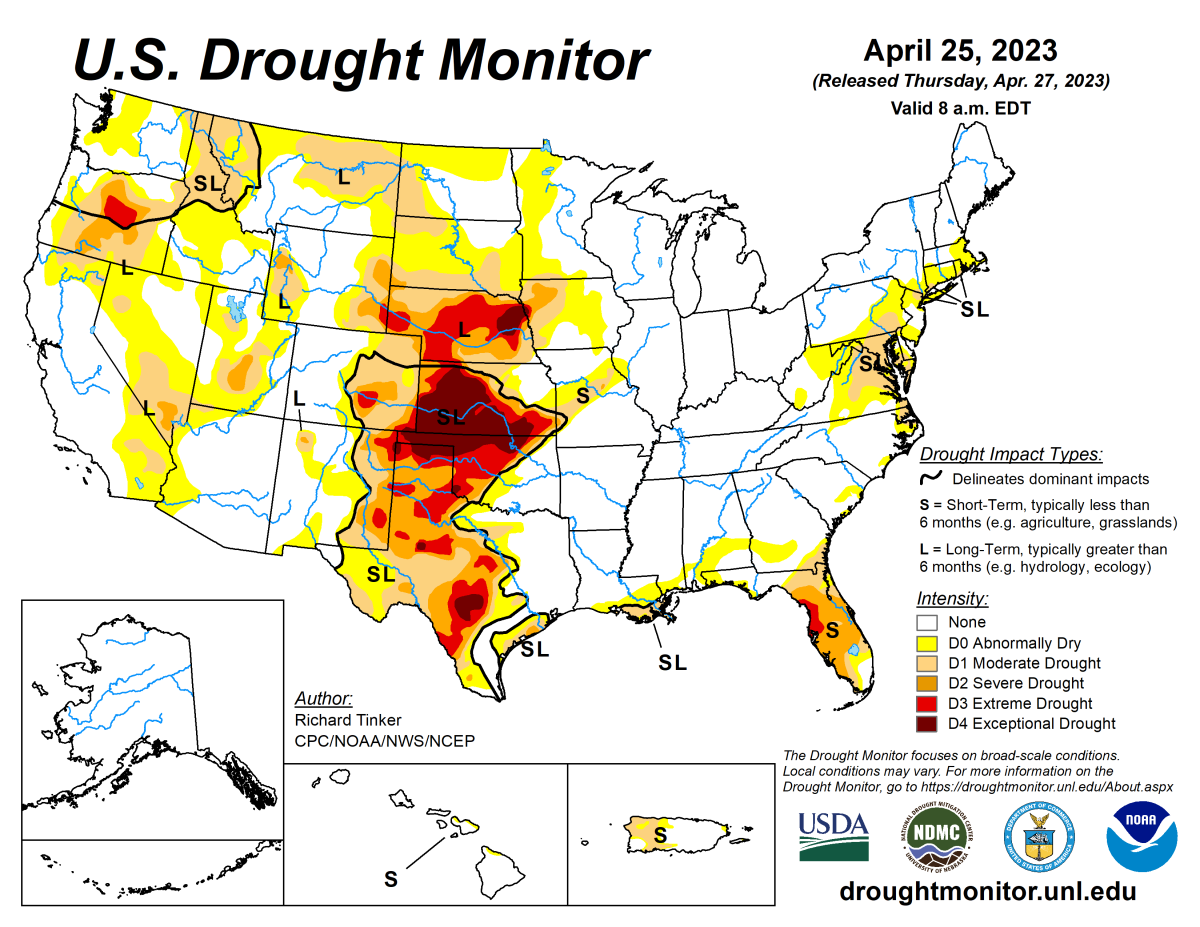
According to the April 25, 2023 U.S. Drought Monitor, moderate to exceptional drought covers 21.4% of the United States including Puerto Rico, a decrease from last week’s 21.6%. The worst drought categories (extreme to exceptional drought) increased from 4.6% last week to 5.0%.
A broad upper-level trough developed over the contiguous U.S. (CONUS) during this U.S. Drought Monitor (USDM) week (April 19-25). The trough helped guide Pacific fronts and low-pressure systems across the country. These weather systems brought above-normal precipitation to parts of the Pacific Northwest, central and northern Rockies, and Upper Midwest as they moved eastward across the contiguous U.S. Some of them tapped Gulf of Mexico moisture to spread above-normal rainfall across the southern Plains to the Lower Mississippi Valley, while others drew in Atlantic moisture to give parts of the Northeast a wetter-than-normal week. But outside of these areas, much of the contiguous U.S was drier than normal for the week.
Cool air associated with the trough and cold fronts resulted in a cooler-than-normal week for most of the country. Drought or abnormal dryness expanded or intensified where it continued to dry in parts of the Plains to the Mid-Mississippi Valley, Southeast, and Mid-Atlantic.
Drought or abnormal dryness contracted or reduced in intensity across parts of the West, extreme northern and southern Plains, Upper Mississippi Valley, New England, Florida peninsula, and Hawaii. Nationally, contraction exceeded expansion, with the nationwide moderate to exceptional drought area decreasing this week.
Abnormal dryness and drought are currently affecting over 114 million people across the United States including Puerto Rico—about 36.8% of the population.

The full U.S. Drought Monitor weekly update is available from Drought.gov.
In addition to Drought.gov, you can find further information on the current drought as well as on this week’s Drought Monitor update at the National Drought Mitigation Center.
The most recent U.S. Drought Outlook is available from NOAA’s Climate Prediction Center and the U.S. Department of Agriculture provides information about the drought’s influence on crops and livestock.
For additional drought information, follow #DroughtMonitor on Facebook and Twitter.



